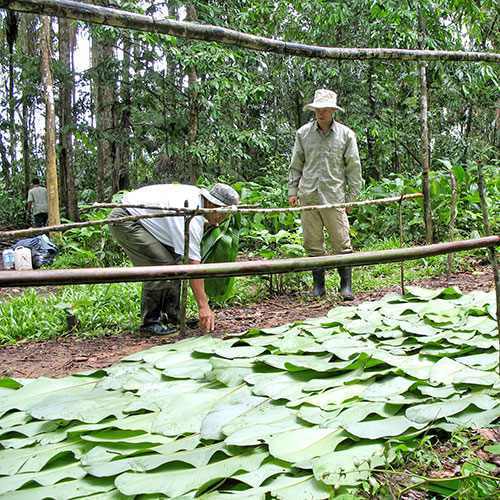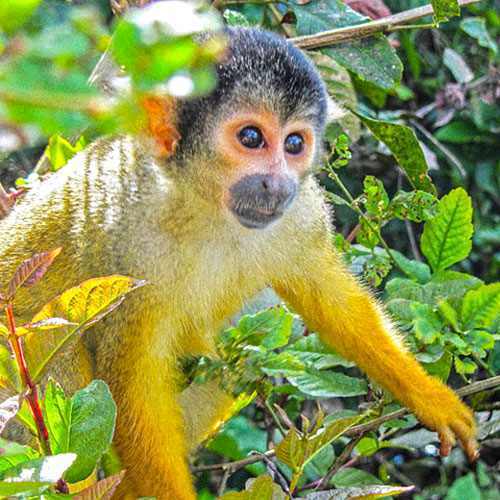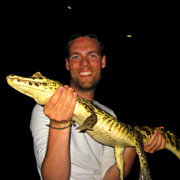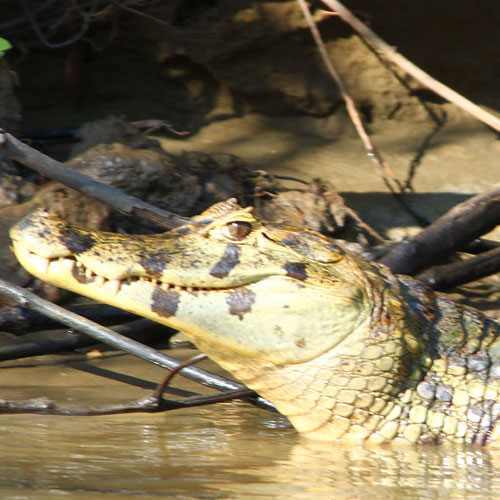Rurrenabaque is located in northeast Bolivia, along the east bank of the Beni River in the Amazon Basin and surrounded by green hills. One travels southwest from Rurrenabaque on foot and by boat along the Beni or Tuichi Rivers to reach the rainforest, and northeast along the Yacuma to reach the pampas marshlands.
As one would expect, the climate in the Amazon basin is quite hot and humid throughout. The best time to go is during the dry season, as the January to March rainy season can lead to muddy, flooded walking trails and more mosquitos and sandflies. Although the vegetation along the pampas is not as exuberant or lush as in the jungle, and the sun is more oppressive, you can generally see more animals during pampas tours. This is because animals gather along the riverside to drink. During the rainy season, however, this happens less as water pools in various areas.
One can see more crocodile species here than in any other place in the world, most notably the black caiman. There are also a variety of monkeys as well as anaconda, pink dolphins, capybaras, and tropical birds. With great luck, visitors might even enjoy the rare jaguar sighting.
The Tacana indigenous communities have lived in the area since pre-Columbian times. They were one of the few lowland tribes that resisted Christianity after the Spanish conquest. It was the Tacana who named the river Beni, which means wind, as well as Rurrenabaque, which is derived from the name of a nearby arroyo, Suse-Inambaque, Duck Ravine. (Rurre is pronounced zussay.)
Efforts to create Madidi National Park or to at least provide indigenous residents with land titles began in the 1960's but saw little success. In the 1970's the first formal proposal for a national park was denied, and in the 1980's lumber companies made alarming intrusions. Conservationist Rosa Maria Ruiz began to travel by foot and balsa to each community to explain the benefits of titling the lands and then using the titles to create a national park, and finally, in 1992, the Bolivian government agreed to consider it. The World Bank offered financial assistance, and in 1995 Madidi National Park was born. This September 2012, a 10 year study was released by the Wildlife Conservation Society showing the Madidi is probably the most biologically diverse place on earth. Its provides refuge for 11% of the world's bird species, hundreds of mammal species, and 12,000 plant species. Presently, only SERNAP-authorized operators may enter the park, and all visitors must be accompanied by a local guide.



3 dias /2 noches
